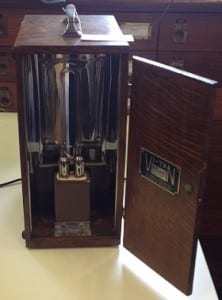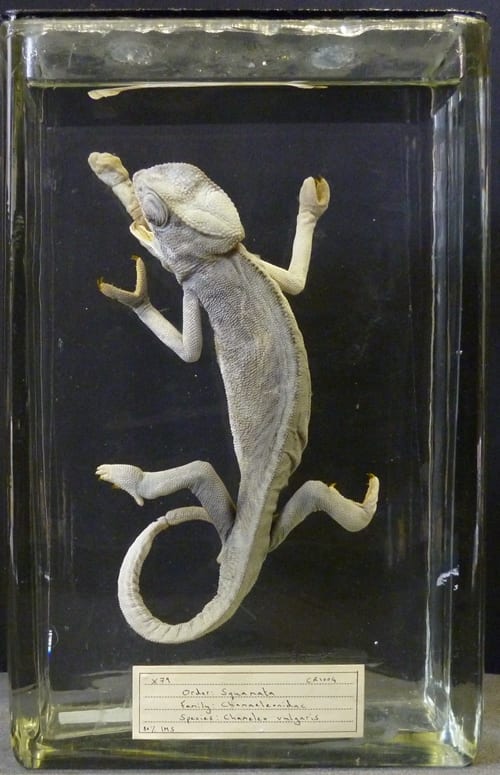Please don’t call us a Cabinet of Curiosity
By Jack Ashby, on 12 February 2016

Embryological wax model display at the Grant Museum.
Top: Frogs; Middle: Arthropod, Echinoderm, Human; Bottom: Lancelet
“Isn’t the Grant Museum wonderful! It’s such a cabinet of curiosity!”
This exclamation is clearly meant as a rich endorsement of the Grant Museum – it’s obviously intended as a compliment. Nevertheless, it makes me wince.
Inspiring curiosity and wonder is surely among the highest ambitions a museum could ever have. It’s infinitely more important than making visitors learn something. Curiosity? I am a huge fan. Cabinets? We definitely have some nice ones. Cabinets of Curiosity? No thanks.
For me, this term implies that our objects are nothing but curios – weird artefacts amassed by some eccentric collector. Erratically accumulated in another time; weird and wonderful titbits intended to impress; to show off the collector’s status and influence – “Gosh, Sir William! Where did you get that ghastly tenrec!?” (more…)
 Close
Close





 Have you ever seen something in a museum and suspect that the curators have got it wrong? If so, I hope you haven’t been too shy to let the museum know. Speaking for the Grant Musuem at least, we love it when visitors add to our knowledge of the collection, and we don’t ask for “expert” credentials before hearing an opinion. Indeed, a 11 year boy spotted that a specimen labelled “marine iguana” was in fact a tuatara (a lizard-shaped reptile from New Zealand (that is in fact not a lizard)). And couple of years back, a visitor noticed that
Have you ever seen something in a museum and suspect that the curators have got it wrong? If so, I hope you haven’t been too shy to let the museum know. Speaking for the Grant Musuem at least, we love it when visitors add to our knowledge of the collection, and we don’t ask for “expert” credentials before hearing an opinion. Indeed, a 11 year boy spotted that a specimen labelled “marine iguana” was in fact a tuatara (a lizard-shaped reptile from New Zealand (that is in fact not a lizard)). And couple of years back, a visitor noticed that 